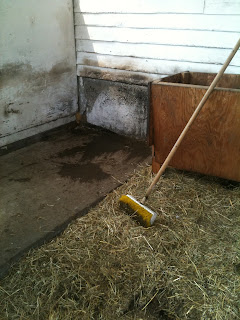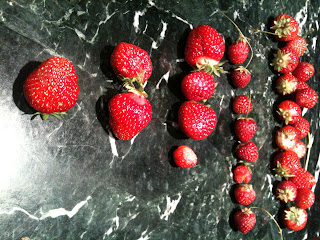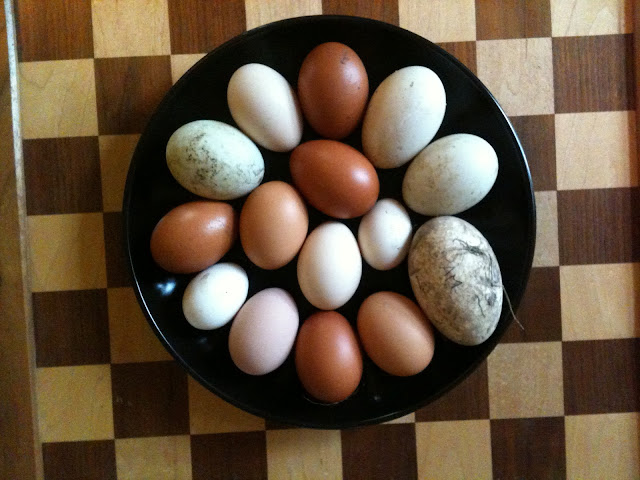When she was very tiny, Lightening, the beautiful and playful daughter of Gloria the Glory Goat, had a freak accident and broke a bone in her leg.
For a milk goat, a hind leg is extremely important. A pregnant goat puts much of her weight on her lower back and back limbs. A full udder can hold a couple of quarts of milk, placing great stress on the hooves and legs.
 |
| Adult udder - a burden! |
But she is young, willing to be confined, her bones are still growing and she had the chance to heal just right.
True to her name, lightening healed swiftly, faster than anyone expected.
Today, on a sunny day in the high seventies - the perfect Seattle day , I let her explore new parts of the farm.
We fence off the vegetable and fruit garden from the goats to protect it. Goats will eat the tips and leaves of all the branches they can reach on a tree, often breaking them in the process, then strip the bark off the lower trunk. But one goatling with a still developing stomach can't do much.
Lightening was content to nibble a few stems of grass growing between the bricks on the path, taste some grape leaves that hung down too far, and explore while staying safely close to her mom and me.

Days like this are few and far between.
It's usually too hot or cold, raining or sticky, I have to go to work, or some chore is waiting to be done. But it's a perfect day, and this little animal is learning and exploring and I'm here in the present for her.
We watch a hen picking the seeds out of a borage plant. She may have been eating whole flowers too. Lightening samples the borage and likes it but doesn't go back for seconds.
A huge onion is ready to harvest. Lightening tries its leaves and decides they're too spicy for her.
 The ducks are resting in the grass, three black ovals so motionless they must either be very happy, or dead. As she approaches, I see them moving slowly, trying to decide whether to get up.
The ducks are resting in the grass, three black ovals so motionless they must either be very happy, or dead. As she approaches, I see them moving slowly, trying to decide whether to get up. 

 The idea of permaculture is still new to me. As I understand it the goal is to design a so that the animals, the plants and we humans benefit each other in multiple ways without any element having to be pushed too hard. A goat wanders down a path nibbling the trailing parts of vines that grow too low, cleaning up grasses between the cracks and choosing not to eat the vegetables.
The idea of permaculture is still new to me. As I understand it the goal is to design a so that the animals, the plants and we humans benefit each other in multiple ways without any element having to be pushed too hard. A goat wanders down a path nibbling the trailing parts of vines that grow too low, cleaning up grasses between the cracks and choosing not to eat the vegetables.A hen gleans the seeds from a nectar plant, and keeps it from over planting itself next year. Some ducks clear out the slug population, eat any leftovers from the other animals' dishes and thus eliminate a food source for pests
A wasp is too busy pollinating a fennel blossom to sting me. Later, she will gather cabbage moth larvae to feed her young.
A lady follows behind taking pictures. I'm in the beginning stages of putting things together in my mind. Seeing things on such a glorious day helps me imagine possibilities. So does seeing what interests - and repels- my little goat.
Pretty soon, the goats got nervous about being separated.
Gloria started baying, and Lightening responded by calling in her shaky, treble baby voice.
The gate suddenly became a barrier, and it was time for her to go back into the more familiar yard.
She doesn't seem too stressed out or tired from her exploration. Soon she'll be back to climbing trees and getting into mischief, and later she will be a strong, healthy mama goat with four good legs.

































